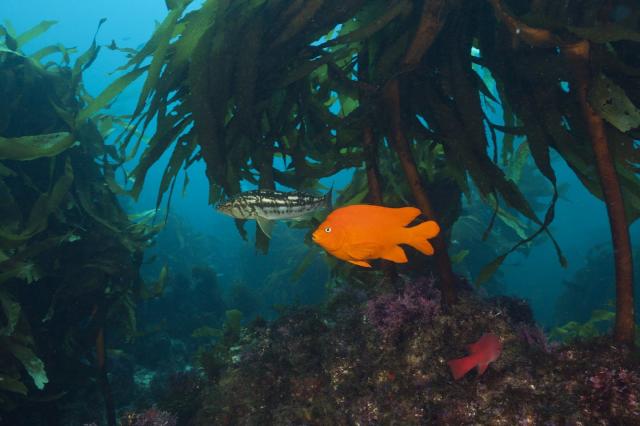Protecting the ocean: 5 essential reads on invasive species, overfishing and other threats to sea life

Views (113)

Fish in a kelp forest off San Benito Island, Mexico. Photo by Reinhard Dirscherl/ullstein bild via Getty ImagesHumans rely on the ocean for many things, including food, jobs, recreation and stabilization of Earth’s climate. But although ocean resources may seem infinite, human impacts like pollution, overfishing and climate change are creating what United Nations Secretary-General António Guterres has called an “ocean emergency.” Climate change is pushing ocean temperatures to record levels, man
These five articles from The Conversation’s archive spotlight urgent challenges for ocean conservation, and describe what researchers are doing to devise effective responses.
Invasive lionfish are aggressive predators, native to the Indo-Pacific Ocean, that feed on smaller reef fish. They have caused heavy damage in the Caribbean and Gulf of Mexico since they first appeared in the Atlantic in 1985. Now, they’ve spread south to Brazil, which has many rare endemic fish species and is behind the curve in responding.
One important control strategy was to create an interactive dashboard where anyone can report lionfish sightings. Other steps are likely to include environmental education, organized culls and genetic research to identify distinct lionfish populations and see where they’re moving. With a similar lionfish invasion underway in the Mediterranean, there’s urgent need for effective responses.
One of the ocean’s potentially most valuable resources hasn’t been tapped yet – but that could be about to change.
Less than 10% of the deep seabed has been mapped thoroughly, and most life forms discovered there have never been seen before. Collecting materials from the ocean floor could harm these species – for example, by burying them in sediments. “We believe it would be wise to better understand this existing, fragile ecosystem better before rushing to mine it,” the authors concluded.
Illegal fishing – taking too many fish, or harvesting threatened species – causes economic losses estimated at US$10 billion to $25 billion annually. It also has been linked to human rights violations, such as forced labor and human trafficking. But it’s easy to conduct these activities out of sight on the high seas.
By looking at when and where fishing boats turned off their location transponders at sea, academic and nongovernment researchers showed that these silences can be an important signal.
Ships may also disable their transponders to avoid pirates or avoid drawing competitors to rich fishing sites, so making it illegal to turn their signals off isn’t a practical strategy. But more analysis of where boats go dark could help governments target inspections and patrols, reducing crimes at sea.
The network would include intelligent gliders and autonomous vehicles that could collect data and then dock, repower and upload it. It also would use sensors and acoustic transceivers to monitor dark, hidden reaches of the ocean where carbon is stored. “This network makes observation possible for making decisions that will affect future generations,” de Menocal wrote.
Editor’s note: This story is a roundup of articles from The Conversation’s archives.
Read more:
0 Likes
